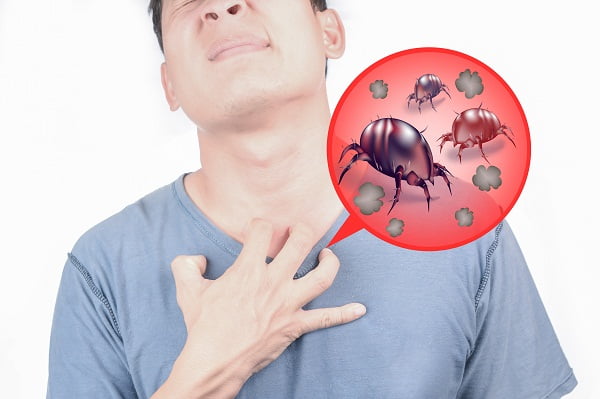What Are the Causes and Risk Factors of Asthma?
- Updated on: Jul 9, 2024
- 3 min Read
By
- Published on Oct 3, 2019


Asthma Causes and Risk Factors
The cause of asthma is not yet clear completely but it occurs due to a combination of environmental and genetic factors. More people are getting asthma these days. It is because of the lifestyle choices such as about housing, diet and environment.
The factors that can cause asthma are described below:
Asthma in children
Asthma is the most common disease among children who:
- have low birth weight (less than 2 kg)
- are exposed to tobacco smoke
- are black
- had bronchiolitis
- were born premature and needed a ventilator
First symptoms of asthma in children occur around the age of five. Wheezing and respiratory infections are the first seen symptoms.
Read more about asthma symptoms
Boys are at higher risk of asthma than girls. Some researchers conclude that young male’s airway is of smaller size compared to young female’s airway, which leads to the high risk of the disease.
Allergies
Allergies are seen in almost every asthma sufferer. Some antibodies cause allergic reactions in the blood that may lead to airway inflammation.
Indoor allergens include:
- Animal proteins (mostly cat and dog allergens)
- Dust mites
- Cockroaches
- Fungi
Tobacco Smoke
The smoke that comes out of cigarette has a negative impact on the lungs and airways. It increases the risk of asthma and number of deaths caused due to asthma. Children whose mothers smoke are at higher risk.
Tobacco smoke contains irritating substances which settle in the moist lining of the airways and causes infection leading to inflammation of the airways. Inhalation of cigarette smoke stimulates the mucous glands in the bronchial tubes. As a result, they make excess mucus which gives rise to cough.
Environmental Factors
Air pollution
Air pollution makes the environment smoggy and smoky. These conditions release the most dangerous component known as ozone which is responsible for coughing, shortness of breath, and chest pain. Sulfur dioxide is also emitted when the air is polluted. This gas constricts the airways and causes asthma.
Weather conditions
These are also responsible for causing asthma. Cold air in winters can lead to various health problems like:
- Airway congestion
- Bronchoconstriction (airways constriction)
- Secretions
- Decreased mucociliary clearance (airway inefficiency)
In some areas, humidity makes breathing difficult.
Indoor factors
Household cleaners and paints emit unhealthy fumes that may cause asthma. Nitrogen oxide from gas stoves is also a noxious gas which may cause the condition. People who use gas for cooking are more susceptible to asthma symptoms like wheezing, breathlessness and asthma attacks.
Obesity
Obese people with a body mass index (BMI) between 25 and 30 are 38 percent at high risk of developing asthma. Obese people with BMI greater than 30 percent are at double risk.
Pregnancy
Babies born by Caesarean sections are 20 percent more susceptible to asthma than the babies born by vaginal birth. Caesarean sections have a high risk of bacterial exposure that may modify the immune system of the baby by infections.
If mothers smoke during pregnancy, the risk of asthma increases in their children. Premature birth is also a risk factor for developing asthma.
Stress
When an individual is under stress, there are many changes that happen in the body including:
- Adverse changes in immune system
- Encouraged smoking and drinking habit
These factors increase the likelihood of asthma.
Genes
Genes can be identified as the cause of asthma because having a family member suffering from allergic asthma or another allergic disorder increases a person’s risk of developing the disease. It is said that more than 100 genes are associated with allergic asthma. Most of these associated genes are involved in the immune response of the body while others have an important role in lung and airway function.
Airway Hyperreactivity
The allergens may trigger the hyperactive airways making them inflamed. Not all people develop asthma due to hyperactive airway but still, it is counted as a potential risk.
Atopy
Atopy is the genetic tendency of an individual to develop allergic diseases such as asthma and atopic dermatitis (eczema). In this condition, the immune system reacts very quickly to the common allergens, especially inhaled allergens and food allergens.
It is considered as a risk factor for asthma. Approximately 50 percent of children with atopic dermatitis gradually develop asthma.
What are the Asthma triggers?
An asthma trigger is a factor that irritates the airways and starts the symptoms of asthma. These may vary from person to person. Some people react to only some of them while others react to many of them.
The symptoms of asthma can have a wide range of triggers such as:
- Outdoor allergens, such as pollens from grass, trees and weeds
- Indoor allergens, such as pet dander, dust mites and mold
- Certain drugs like aspirin and beta blockers
- Food allergies like allergy to nuts
- Irritants in the air, such as smoke and chemical fumes
- Certain illness like colds, flu, sinus infections and pneumonia
- Smoke from cigarettes
- Exercise especially in cold air
- Stress
- Weather conditions, such as cold air, dry wind and wet or windy weather
- Strong emotions like anger, fear, excitement and laughter
- Hormonal changes during menstrual cycle












